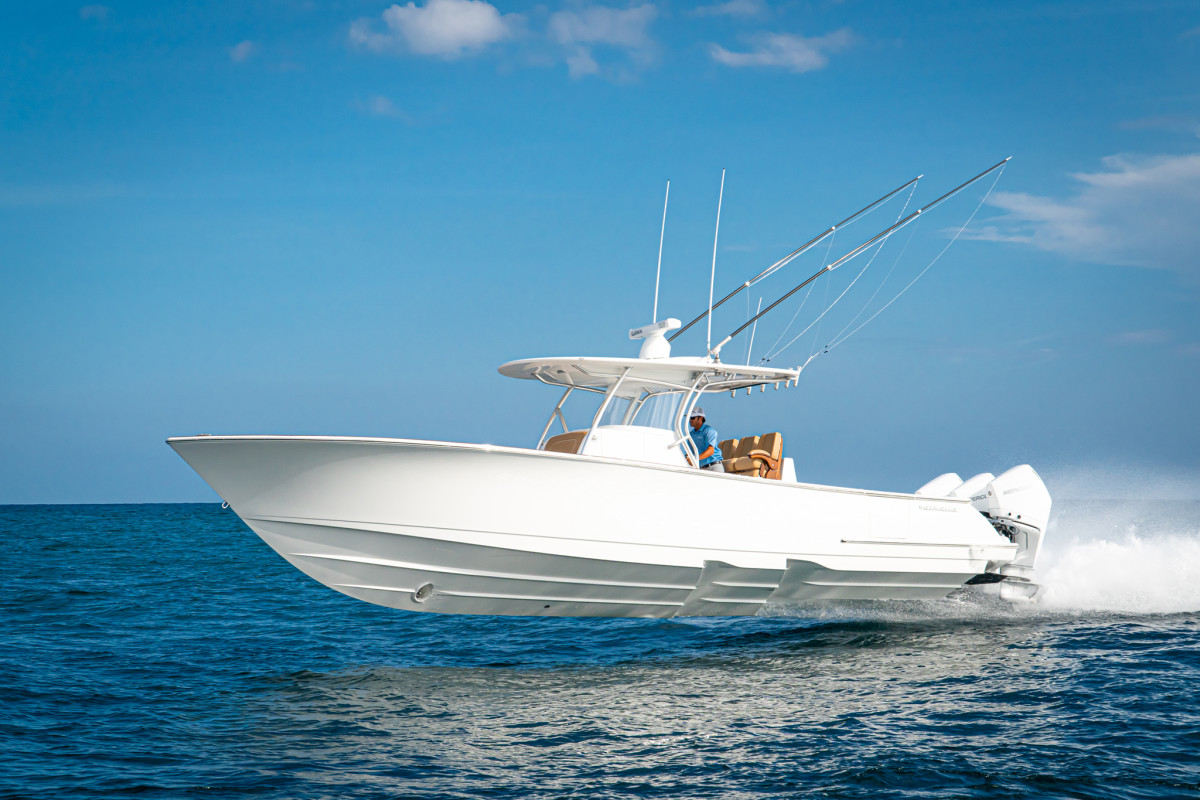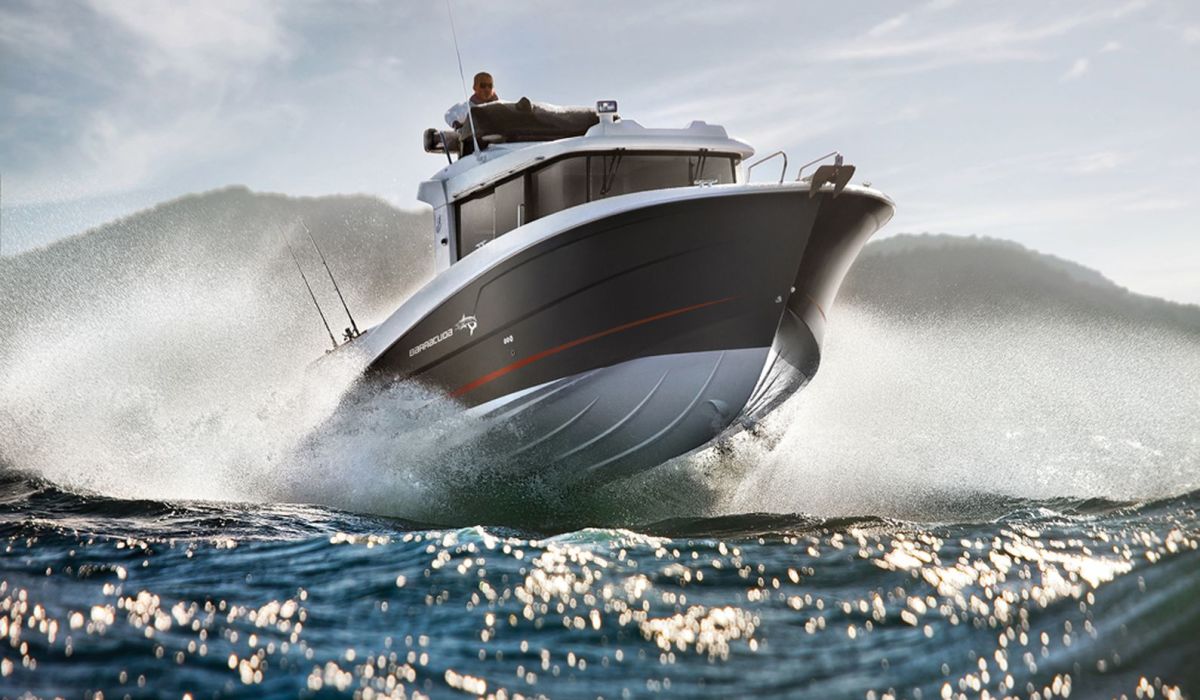Deep V Hulls Operate Best in What Type of Water
A displacement hull lies in the water and displaces water when moving. A deep-V hull is best for speedy vessels providing that wave-braking ability like a knife but displacement hulls are better for slow and steady vessels to plod along through treacherous waters unscathed.
In What Type Of Water Conditions Do Deep V Hulls Operate Best Quora
For powerboats the best rough-water hull is the Deep-V hull.
. This fishing boat is easier to maneuver at slow speeds the Deep-Vee design offers a good ride in rough water as the pointed bow slices forward and the V shaped. Deep V hulls operate best in what type of water conditions. What is the best boat hull.
Since the Deep-V hull works so well with navigating most open waters it is natural that most fishing boats would have Deep-V hulls. Deep-V hulls are the best for offshore use or rougher waters. Where are the gunwales located.
Top of the sides. If you have a powerboat you want a deep-V to face rough waters for a sailboat a trawler or a bigger ship you want a displacement hull. A shallow-V hull is shaped more like an egg rather.
The planing hull can be fast and efficient and its vee shape provides a comfortable ride in. The deep-V bottom isnt perfect though and not all boats have to be deep-Vs. When dealing with hazardous chemicals such as paints what is the best way to get information on how to safely handle the product.
This makes them more stable in waves. Deep V hulls are most common in boats used on large bodies of water where taming the chop in rough conditions is a must. Because the hull knifes neatly through waves rather than hammering this delivers the smoothest ride in choppy seas which is why this design is so popular for offshore sportfishing boats.
There is even a quadaran. Deep-V hull - V-hulls are designed to operate at high speeds and to cut through rough water which provides a smoother ride than flat-bottom or round bottom boats but are not as efficient and need larger engines to move at similar speeds. Boats with this hull type are for example sailboats canoes but also trawlers.
The deeper draft generates drag so boats with a deep-V hull usually need more powerful outboard motors to reach top speed. It handles a lot better than flat-bottomed hulls while its at the same time extremely fast. Deep-V Hulls The opposite of a flat-bottom is a deep-V which is wedge-shaped from bow to stern.
Runabouts and deck boats are do it all family boats that can be used for cruising exploring watersports and casual angling. The deep-vee has a very broad speed range which gives it the ability to get out of harms way assuming that can be accomplished within the boats fuel range. Those compromises enable the hull to slice through waves rather than take a pounding.
It uses its buoyancy to keep afloat. The rest of the hull acts as a planing hull giving the boat its fast edge. The advantage of the deep-V comes when the hull leaves the water so boats that dont jump out of waves for example big fast sportfishermen convertibles sedans and motoryachts -- dont need a deep-V.
A deeper draft also makes deep-V hulls less suitable for. The vast majority of the boats sold today have a variation of the V-hull. Where must registration numbers be displayed.
See answers 2 Best Answer. At BoatTEST we consider all boats from 21 to 25-degrees deep-Vs. This provides the smoothest ride in rough water since the hull knifes cleanly through waves rather than pounding which is why this design is so popular for offshore sportfishing boats6 days ago.
Assuming it is sailing vessels that is being asked about the deep V hull low deadrise angle usually a form of long-keel hull will give better directional stability. They do fine with a shallower V and maybe sharper. What type of boat is best for choppy water.
Because of that there are plenty of fishing boats on our list. The Deep V-shape acts as a tiny keel of sorts stabilizing the boat and making it more reliable and maneuverable. What type of water conditions do Deep V hulls operate best in.
At high speeds if they are light they may rise and reduce wetted surface to some degree thus mitigating drag. So they are not as fuel-efficient and take more horsepower at certain speeds. What type of hull handles rough water the best.
By comparison to a U-shaped hull with a fin keel bolted onto it the V hull will be much less inclined to slam. It generally has two hulls but can range from anywhere from 2 or more from a catamaran to a trimaran. Bear in mind that deep hulls are generally harder to push.
But they also make great family boats. The drawbacks to a deep-V hull are the added draft the depth the hull reaches below the waterline and reduced stability at slow speeds. Catamarans look the best.
The deep V hull is wedge shaped from bow to stern and has a more pronounced deadrise. Hulls with Deep Vs A deep-V which is wedge-shaped from bow to stern is the polar opposite of a flat-bottom. This planing hull has a shallow draft which is good for fishing in small lakes and rivers.
The well-found deep-vee planing hull offers surprisingly good handling in rough water with a smooth ride up-sea good coursekeeping down-sea and stability in a trough.

How Different Hull Types React In Rough Water Soundings Online

How Different Hull Types React In Rough Water Soundings Online

Comments
Post a Comment